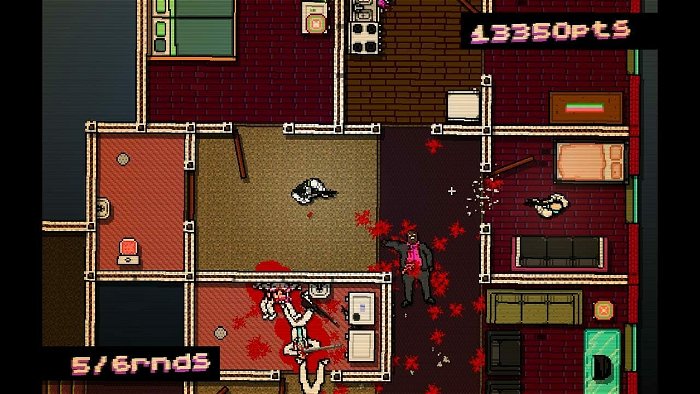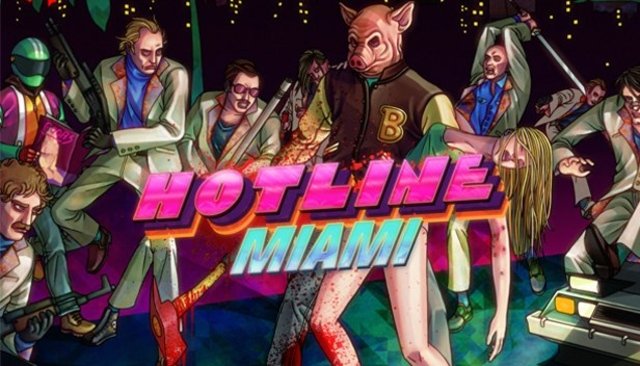Hotline Miami is the indie game that surprised everyone when it debuted on PCs last year. It’s a surreal experience, telling a disturbing tale of man in 80s Miami receiving messages on his answering machine that make genteel requests of him to go on homicidal massacres. It takes the basic premise of the videogame—shooting everything—and turns it into a puzzle, because the slaughter needs to be planned and properly executed for the… executions to succeed. And now it’s on both the PS3 and the Vita, and while it’s still a worthy experience, it’s not without problems.
Killing Is A Puzzle
Obviously there isn’t going to be much talk about the technical impressiveness of Hotline Miami’s graphics. The PS3 and Vita versions both faithfully recreate the game’s PC visuals, although the PS3 version might win out slightly because it appears a little messier, a bit muddier. The super crisp screen of the Vita version actually works against it here as the game’s tone calls more something more organic and moody, a quality better captured on the console version. The sound is still just as engrossing as ever, with the soundtrack by Jasper Byrne, Sun Araw and many others. The music adds a lot to the tone of the game and helps to maintain its disturbing, surreal momentum.

There’s not much in the way of exclusive Sony content here, it’s essentially the same game that was played on the PC, but now with the cross-play ability for those with a Vita. This means it’s possible to move game saves back and forth online to continue where you left off. It’s always a nice touch. However, the real culprit here, which may be a deal breaker for some are the controls. Despite the fact that the ability to use a controller was patched into the original PC version, Hotline Miami is, at its heart, a keyboard and mouse game. The game is still tuned to benefit most from the precision of a mouse. On the PS3, the R2 button and pushing down on the right analog stick allows for locking on to enemies, while the L2 button takes up the scrolling duties that allow the player scan ahead. Of course the right stick can also be used for aiming, but it feels a bit slow and can feel imprecise for some of the required pixel-perfect, line of sight aiming the game can call for at times. It’s still serviceable, but not the ideal tool. The Vita version fares a little worse, with scanning ahead now relegated to the touch screen, dragging the index finger back and forth. The aiming problems on the right stick also persist on the Vita version, but this is made more problematic by the lock on relegated to either, the square button, or tapping on enemies themselves using the touch screen. This is not the type of game where you ever want your hands away from the controls since the situation is constantly fluid, but the Vita version demands it on occasion.
It’s a shame—though understandable—that some concessions had to be made in the transition from a super-precise, mouse and keyboard shooter to less accurate, controller based action. The game’s narrative is still just as compelling and disjointed as ever, but the challenge of the game may have gone up thanks to the less precise controls, a problem even more pronounced on the Vita version. Still, at $9.99, the price is reasonable enough to consider adding one of the most interesting indie games of 2012 to your indie game collection on the PS3 or Vita.






